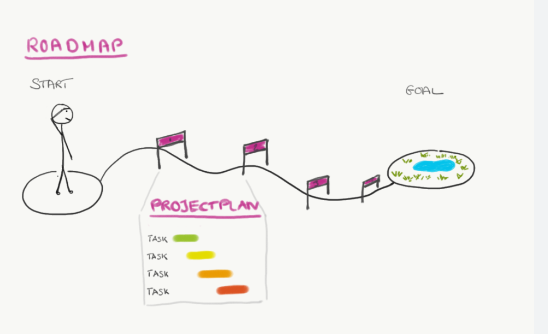Why Roadmapping is Essential for UX Designers?

A UX roadmap is a strategic document that aligns, prioritizes, and communicates a UX team’s future work. A successful roadmap is research-based, user-focused, and prioritizes outcomes over outputs.
Prioritize User Needs
When designing a product, UX designers should start with what the users want to get out of it. By understanding the user’s needs, UX designers from a UX design agency can build functional and enjoyable products.
Design roadmaps are a powerful tool for UX designers. They help teams stay focused on user goals and ensure all team members understand the vision for the product. Prioritizing user needs is essential because it directly impacts user satisfaction, engagement, productivity, competitiveness, and support costs. It also helps ensure products deliver value to the business and customers. This is crucial because it boosts customer loyalty and leads to repeat business.
Prioritize Efficiencies
A user-centered product roadmap is a strategic artifact that provides a single source of truth and sets priorities. It requires cross-functional participation from design, development, marketing, and support teams to ensure cohesion and accountability. UX designers are primarily responsible for creating the roadmap but should collaborate with product managers to align goals and prioritize problems. The roadmap should communicate the team’s vision and priorities and be research-based rather than derived from stakeholder hunches. This is especially true for product roadmaps, which must align with corporate objectives.
Prioritize Usability
The user experience is a core part of a product’s success. UX designers should always prioritize usability in their design and development process. Achieving high usability requires a designer’s empathy toward their target users. Empathy involves putting yourself in their shoes and understanding their needs, fears, goals, and motivations. Using empathy and research, UX designers can develop products that serve their target audience well. In this way, they can provide a better user experience to their customers and make their products more marketable.
Prioritize Convenience
As consumers prioritize convenience, retailers should be mindful of their offerings’ convenience. According to a recent survey by the National Retail Federation (NRF), 83 percent of consumers say that convenience while shopping is more important today than five years ago. The best way to achieve convenience is by making your product accessible and appealing to users. This will help you attract more customers and increase user retention.
Prioritize Scalability
Scalability is essential for UX designers because it allows them to design products that adapt to users’ needs. It also involves creating a product that can accommodate large amounts of data without compromising user experience. For example, a retailer that hosts Black Friday and Cyber Monday sales experiences a lot of traffic that can be difficult for their infrastructure to handle. As a result, they need to ensure that their infrastructure is scalable to avoid downtime or latency issues when these events occur. This means setting up systems that monitor scalability and flag any problems as soon as they arise, so they can be fixed before they get out of hand.
Prioritize Convenience
When it comes to making purchases, consumers today prioritize convenience. Retailers have responded by offering a variety of innovative ways to save time and effort. UX designers need to be able to design products that help customers find what they need quickly. Whether it’s using your website or app, a good user experience can save a customer precious time. To get started on your road map, identify your target audience and what kind of user experience they want from your product. This will help you design the most useful features and make your site more intuitive.




